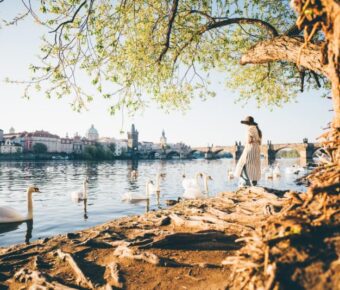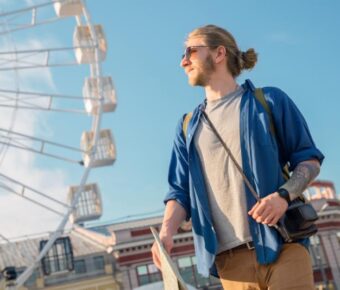
Prague vs Vienna: Which Central European Gem Offers the Best City Break?
Prague and Vienna are two of Europe’s most charming cities. Both offer rich history, stunning architecture, and unique cultural experiences. But which one should you visit?
Prague tends to be better for budget travelers and nightlife lovers, while Vienna shines for classical music and museums. Prague’s fairytale Old Town and castle complex transport visitors to another era. Vienna dazzles with grand palaces and coffeehouse culture.
Each city has its own flavor. Prague feels more compact and medieval, with winding cobblestone streets. Vienna has a more imperial vibe, with wide boulevards and ornate buildings.
Contents
- Historical Significance of Prague and Vienna
- Captivating History of Prague
- Vienna’s Imperial Past
- Architectural Marvels
- Prague’s Centuries-Old Structures
- Vienna’s Classical Influences
- Cultural Exploration
- Diverse Culture of Prague
- Vienna’s Artistic Heritage
- Lifestyle and Atmosphere
- Prague’s Bohemian Lifestyle
- Vienna’s Coffee House Culture
- Recreation and Things to Do
- Active Adventures around Prague
- Vienna’s Refined Recreations
- Comparing Costs
- Accommodation and Living Expenses in Prague
- Vienna’s Cost of Leisure
- Transportation and Accessibility
- Navigating through Prague
- The Ease of Transport in Vienna
- Weather and Seasonal Considerations
- Prague’s Seasonal Beauty
- Vienna’s Year-Round Appeal
- Frequently Asked Questions
- Which city should I visit during Christmas, Prague or Vienna?
- What are the cost differences between living in Prague versus Vienna?
- How does the nightlife compare between Prague and Vienna?
- What makes Prague a popular tourist destination?
- Is the train journey between Prague and Vienna scenic and worthwhile?
- Between Prague, Vienna, and Budapest, which offers the most value for travelers?
- More Travel Guides
Historical Significance of Prague and Vienna
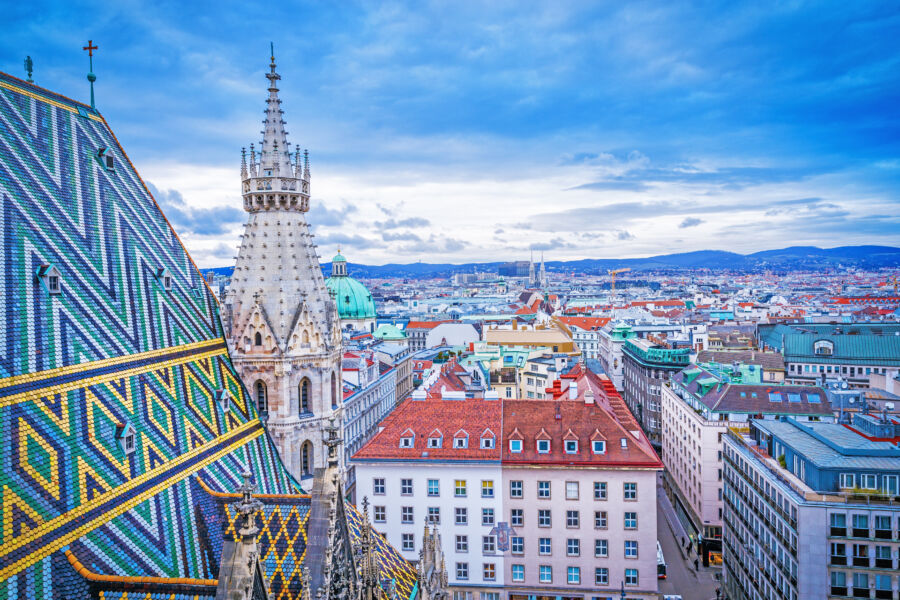
Prague and Vienna stand as towering giants of European history. These cities have witnessed centuries of pivotal events, shaping the continent’s cultural and political landscape. Their grand palaces, ancient bridges, and winding streets tell tales of bygone eras.
Captivating History of Prague

Prague’s story is one of resilience and beauty. The city’s famous Charles Bridge, built in the 14th century, has stood firm through wars and revolutions. It’s a symbol of Prague’s enduring spirit.
Prague Castle, perched high above the city, has been home to kings and presidents for over a thousand years. It’s the largest ancient castle complex in the world.
The city’s Jewish Quarter speaks of a rich and sometimes tragic past. Its old synagogues and cemetery are reminders of the vibrant Jewish culture that once thrived here.
Vienna’s Imperial Past

Vienna was once the beating heart of the mighty Habsburg Empire. The grand Hofburg Palace, home to rulers for over 600 years, still dominates the city center. Its opulent rooms whisper stories of power and intrigue.
Austria’s capital city played a key role in shaping Central Europe. It was a hub of art, music, and ideas, and the city’s coffee houses were hotspots for thinkers and artists.
Vienna’s Ring Road, lined with stunning buildings, shows off the city’s imperial glory. Each structure, from the Opera House to the Parliament, tells a piece of Vienna’s rich history.
Architectural Marvels
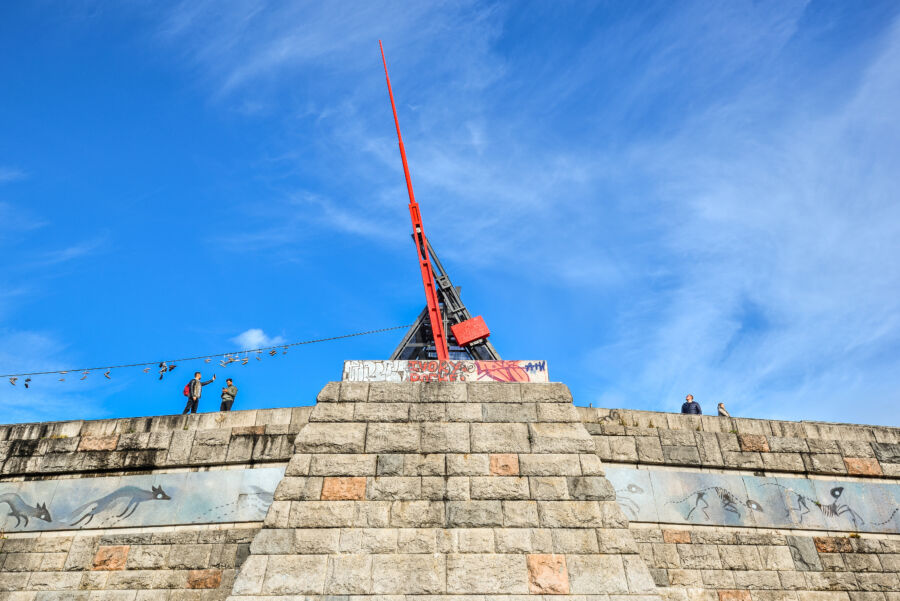
Prague and Vienna both boast incredible architectural wonders that showcase centuries of history and artistic styles. These cities are living museums of design, with stunning structures that tell the stories of their past and present.
Prague’s Centuries-Old Structures
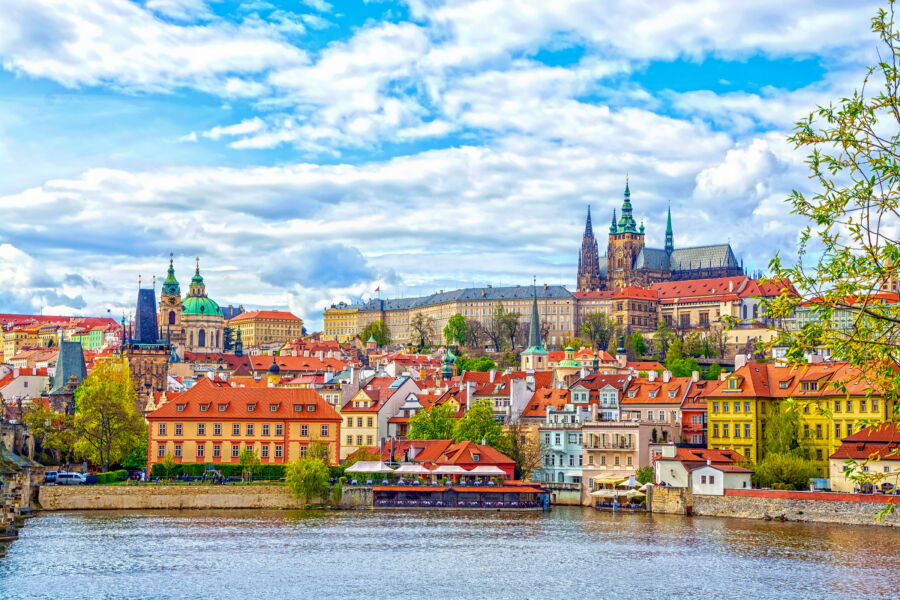
Prague’s skyline is a fairytale come to life. The city’s Old Town Square is home to the famous Astronomical Clock, a medieval marvel that’s been ticking since 1410. It’s not just a timepiece – it’s a work of art that draws crowds every hour to watch its intricate moving figures.
Crossing the Vltava River, you’ll find the iconic Charles Bridge. This stone arch bridge is lined with statues and offers breathtaking views of Prague Castle, perched high above the city. It’s one of the largest ancient castles in the world and has been the seat of Czech rulers for over a thousand years.
Vienna’s Classical Influences

Vienna’s architecture screams elegance and grandeur. The city center is a treasure trove of baroque buildings that’ll make your jaw drop. The Hofburg Palace, once home to the Habsburg rulers, is now a sprawling complex that houses museums and government offices.
For a taste of royal life, head to Schönbrunn Palace. This summer retreat of the Habsburg monarchs is a masterpiece of baroque architecture, complete with stunning gardens. Don’t miss the Belvedere, another baroque gem that now houses an impressive art collection.
But Vienna isn’t stuck in the past. The city has embraced modern architecture, too. Sleek, contemporary buildings mix with the old, creating a unique urban landscape that spans centuries of design.
See Related: Prague vs Budapest: Which Central European Gem Offers the Ultimate City Break?
Cultural Exploration

Prague and Vienna offer rich cultural experiences that captivate visitors. Both cities boast unique artistic treasures, historic landmarks, and vibrant traditions that reflect their storied pasts.
Diverse Culture of Prague

Prague’s Old Town Square is a hub of activity, with street performers and local artists showcasing their talents. Prague’s museums are treasure troves of history and art. The National Museum houses millions of items, from prehistoric artifacts to 20th-century memorabilia.
Music lovers can enjoy concerts in stunning venues like the Rudolfinum or Municipal House. These halls host world-class orchestras playing classical masterpieces. Visitors can pop into cozy pubs to sample Czech beer and traditional dishes for a taste of local flavor.
Prague’s hidden gems include small galleries tucked away in winding streets. These spaces often feature works by up-and-coming Czech artists. The city’s cultural scene is always buzzing with festivals, exhibitions, and events that celebrate both old and new Czech traditions.
Vienna’s Artistic Heritage

Vienna’s MuseumsQuartier is a sprawling complex of museums and galleries. It’s a perfect starting point for art enthusiasts. The Kunsthistorisches Museum houses an impressive collection of European masterpieces, including works by Vermeer, Raphael, and Bruegel.
Classical music is Vienna’s heartbeat. The city offers nightly concerts featuring works by Mozart, Strauss, and other famous composers. The Vienna State Opera is a must-visit for its stunning architecture and world-class performances.
Vienna’s coffee house culture is an integral part of its heritage. These cafes are more than just places to grab a drink – they’re social hubs where locals gather to chat, read, and relax. The Spanish Riding School, with its elegant Lipizzan horses, offers a glimpse into Vienna’s imperial past.
Art lovers will find joy in exploring Vienna’s smaller galleries. These spaces often showcase contemporary Austrian artists and cutting-edge exhibitions. The city’s cultural scene is always evolving, blending its rich history with modern creativity.
Lifestyle and Atmosphere
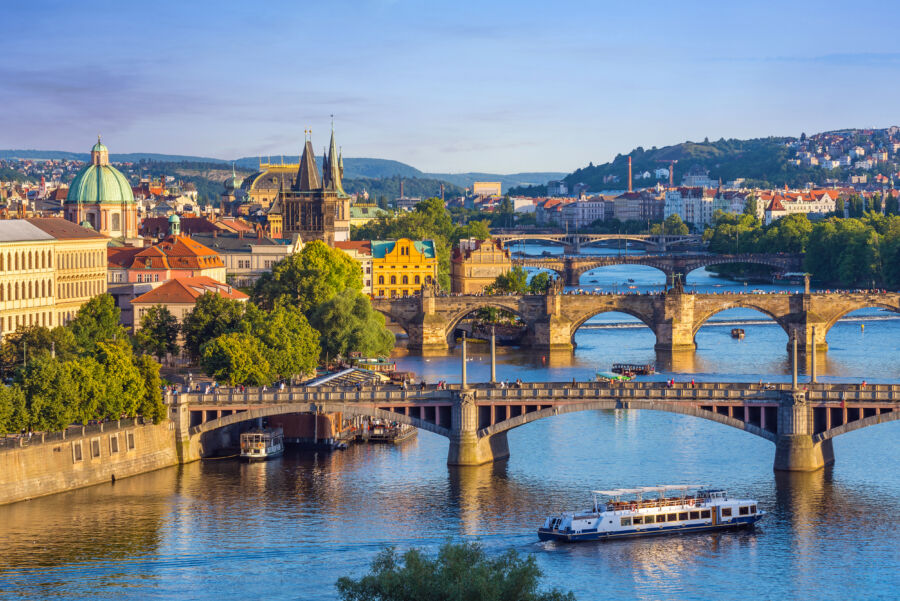
Prague and Vienna offer distinct vibes that shape daily life and visitor experiences. Each city has its own unique charm, from cozy pubs to elegant cafes.
Prague’s Bohemian Lifestyle
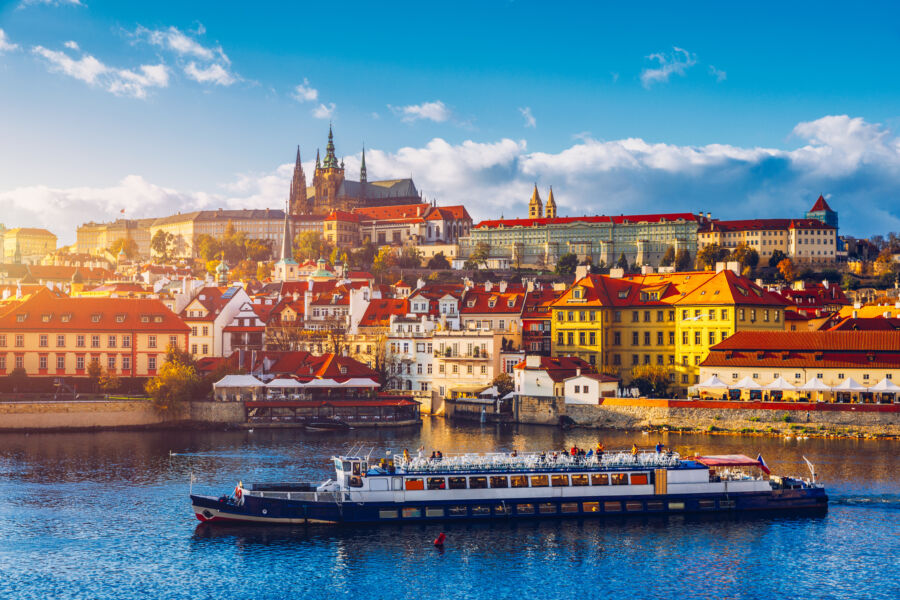
Prague’s laid-back atmosphere draws people in. The city’s winding cobblestone streets are perfect for aimless wandering. You’ll find hidden courtyards and quirky art installations around every corner.
Locals love hanging out in beer gardens and riverside parks. The famous Czech beer is cheap and plentiful. Nightlife in Prague is vibrant, with clubs staying open till dawn.
Food here is hearty and affordable. Try traditional dishes like goulash or svíčková at casual pubs called hospodas. For shopping, vintage stores and local markets are popular spots.
Prague uses the Czech koruna, not the euro. This can make things a bit cheaper for visitors from the eurozone.
Vienna’s Coffee House Culture

Vienna moves at a more refined pace. The city is known for its grand architecture and musical heritage. But it’s the coffee houses that really define daily life here.
These cafes are like cozy living rooms where people linger for hours. Locals read newspapers, chat with friends, or work on laptops. The coffee is excellent, often served with a side of cake.
Vienna’s food tends to be pricier but of very high quality. Don’t miss trying schnitzel or sachertorte. Check out the heurigen (wine taverns) on the outskirts for a casual vibe.
Vienna uses the euro. Shopping here focuses on luxury brands and designer goods. The city also has great markets for food and antiques.
Recreation and Things to Do

Prague and Vienna both offer plenty of fun activities for visitors. Each city has its own unique recreation vibe, with options for all ages and interests.
Active Adventures around Prague

Prague’s Old Town Square is a great starting point for exploring. Wander the cobblestone streets and take in the beautiful architecture. For a bird’s-eye view, climb the Old Town Hall Tower.
In summer, rent a paddleboat on the Vltava River; it is a relaxing way to see the city from the water. Hikers will love the Divoká Šárka nature reserve on Prague’s outskirts. The trails wind through forests and rocky canyons.
Winter brings ice skating rinks to public squares. Strap on some skates and glide across the ice with locals. For indoor fun, check out the mirror maze at Petrin Hill, kids especially get a kick out of the wacky reflections.
Vienna’s Refined Recreations
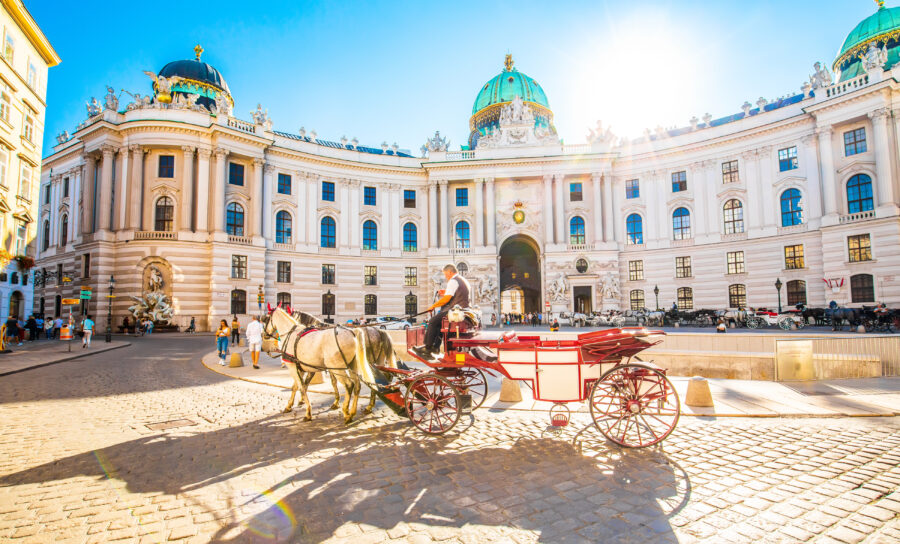
Vienna’s Prater amusement park is a must-visit for families. The giant Ferris wheel offers amazing city views, and thrill-seekers can try the roller coasters and other rides.
Art lovers shouldn’t miss the MuseumsQuartier. This cultural complex has museums, performance spaces, and cafes.
The Hofburg palace complex gives a glimpse into royal life. Tour the imperial apartments and see the crown jewels.
In winter, outdoor Christmas markets pop up around Vienna. Here, you can sip hot punch and shop for handmade gifts.
Summer brings open-air film screenings to Karlsplatz. Pack a picnic and enjoy a movie under the stars.
For a special date night, book tickets to the Vienna State Opera. The ornate building is worth seeing even if you’re not an opera buff. Couples can also take a romantic ride in a horse-drawn carriage through the old city center.
See Related: 3 Week Europe Trip Cost: Budget-Savvy Guide for $3000
Comparing Costs

Prague and Vienna offer different experiences when it comes to travel costs. Let’s look at how they stack up for accommodation, food, and fun.
Accommodation and Living Expenses in Prague
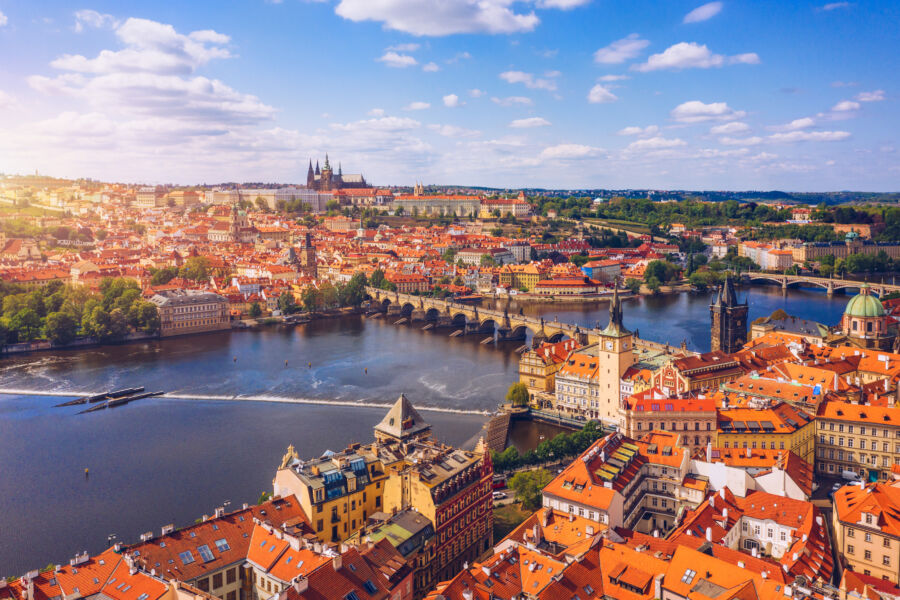
Prague is generally cheaper than Vienna. Rent in Prague is about 4% lower.
A nice apartment in the city center might cost around $700-$800 per month. Hostels are a great option for budget travelers, with beds starting at $10-15 per night.
Food is also more affordable in Prague. Grocery prices are about 32% lower than in Vienna.
Eating out won’t break the bank either. A meal at a casual restaurant might cost $7-10, while a nicer dinner could be around $20-25 per person.
Public transport in Prague is cheap and efficient. A monthly pass costs about $25, making exploring the city on a budget easy.
Vienna’s Cost of Leisure
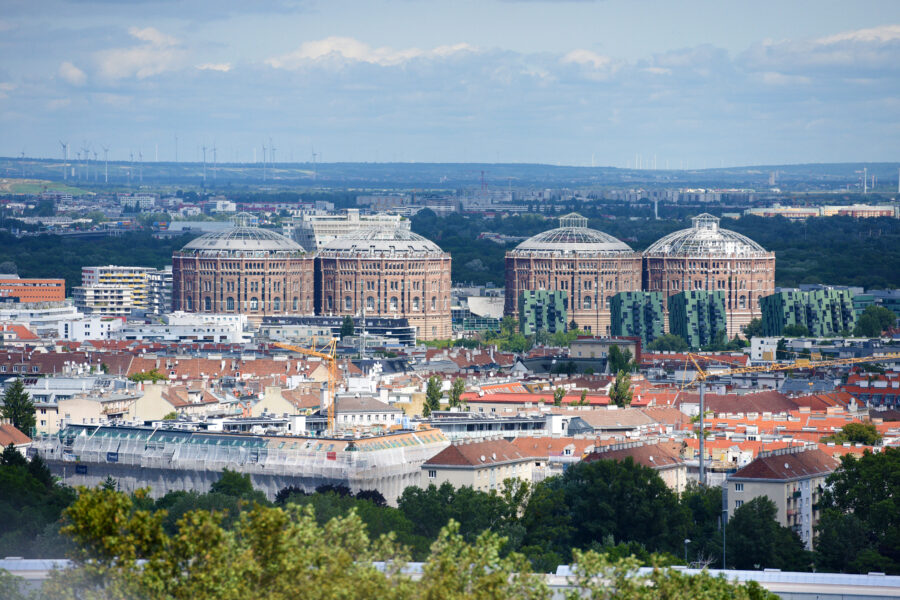
Vienna is pricier, but still offers good value. Hotels and apartments in Vienna’s center can cost 20-30% more than in Prague. A decent hotel room costs $80-100 per night.
Dining out in Vienna is more expensive. A meal at a mid-range restaurant might cost $15-20 per person.
But the quality is often top-notch. Coffee house culture is big here, with a cappuccino costing around $3-4.
Vienna’s attractions can add up. Many museums charge $15-20 for entry.
But there are ways to save—the Vienna Pass gives free entry to over 60 attractions. It’s worth it if you plan to see a lot.
Public transport in Vienna is more expensive than in Prague, but still reasonable. A weekly pass costs about $20.
Transportation and Accessibility

Prague and Vienna both offer excellent public transportation options. Their well-connected public transit systems and walkable city centers make exploring a breeze for visitors.

Prague is a walker’s paradise. The compact Old Town and castle district are best explored on foot. Cobblestone streets wind through charming neighborhoods, letting you soak in the atmosphere.
When your feet need a break, the efficient Prague Metro is there for you. It has three lines covering the main areas tourists want to see.
Trams are another great way to get around. They’re frequent and go to most parts of the city.
Take the funicular up Petrin Hill for amazing views. Taxis are available, but make sure the driver doesn’t overcharge you. The airport is about 30 minutes from the center by bus or taxi.
The Ease of Transport in Vienna

Vienna’s public transit is top-notch. The U-Bahn subway is the star, with frequent trains whisking you around quickly.
Trams and buses fill in the gaps, creating a network that reaches every corner. In the inner city, many attractions are within walking distance of each other.
Bikes are popular, too, and there are plenty of dedicated lanes. The city runs a bike share program that’s easy for visitors to use.
Vienna’s airport has its own train station. The City Airport Train gets you to the center in just 16 minutes.
Taxis and buses are other options. Once you’re in town, getting around Vienna will be simple and stress-free.
Weather and Seasonal Considerations

Prague and Vienna both have distinct seasons that shape the visitor experience. The weather impacts everything from sightseeing to outdoor activities in these beautiful Central European capitals.
Prague’s Seasonal Beauty

Prague shines in every season. Spring brings mild temperatures and blooming gardens—perfect for strolling the charming streets. Summers are warm and sunny, great for exploring the Prague Castle or relaxing in beer gardens.
Fall paints the city in gorgeous autumn colors. It’s an amazing time for photos of the Charles Bridge with golden leaves.
Winters get cold and snowy, but the Christmas markets are magical. Bundle up to see the Old Town Square tree all lit up!
Prague tends to be a bit cooler than Vienna year-round. Pack layers, as the weather can change quickly. Rainy days aren’t uncommon, so bring an umbrella just in case.
Vienna’s Year-Round Appeal
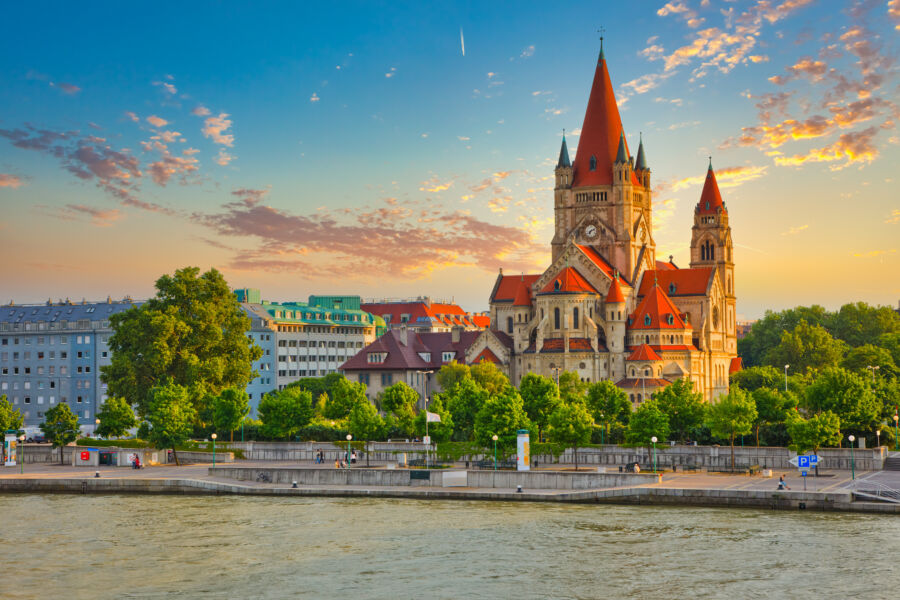
Vienna dazzles visitors in every season, too. Spring and fall are lovely, with comfortable temperatures for wandering the grand palaces and parks. Summers can get hot, but that’s when the outdoor cafes and wine gardens really come alive.
Winter in Vienna is a treat. The city goes all out with twinkling lights and festive markets. Ice skating in front of City Hall is super fun. Just dress warm – it gets chilly!
Vienna sees a bit more sun than Prague, especially in winter. It’s also slightly warmer overall.
Still, always check the forecast before you go. The weather can be unpredictable in this part of Europe.
See Related: Prague vs Berlin: Key Differences for Savvy Travelers
Frequently Asked Questions

Travelers often wonder about the differences between Prague and Vienna. These cities offer unique experiences, from festive holidays to vibrant nightlife and scenic train rides.
Which city should I visit during Christmas, Prague or Vienna?
Prague and Vienna both shine during Christmas. Prague’s Old Town Square hosts a magical market with a giant tree and local crafts. Vienna dazzles with its Christkindlmarkt at Rathausplatz, featuring ice skating and festive concerts.
What are the cost differences between living in Prague versus Vienna?
Prague is generally cheaper for everyday expenses. Rent, food, and entertainment cost less in Prague. Vienna has higher prices, especially for housing and dining out, but it also tends to have higher salaries.
How does the nightlife compare between Prague and Vienna?
Prague’s lively and diverse nightlife, with many pubs, clubs, and beer gardens. Vienna’s scene is more refined, with elegant bars, jazz clubs, and wine taverns. Both cities have options for all tastes.
What makes Prague a popular tourist destination?
Prague charms visitors with its fairy-tale architecture. The Charles Bridge and Prague Castle are big draws.
Cheap beer and hearty food add to the appeal. The city’s rich history and affordable prices make it a hit with tourists.
Is the train journey between Prague and Vienna scenic and worthwhile?
The train ride between Prague and Vienna is pleasant and comfortable. It takes about 4 hours.
Travelers see pretty countryside views along the way. It’s a nice alternative to flying and lets you see more of the region.
Between Prague, Vienna, and Budapest, which offers the most value for travelers?
Budget travelers often choose Prague. It has cheaper hotels and food.
Vienna offers high-quality experiences but at higher prices. Budapest falls in the middle, with good value and lots to see. Each city has its own charm and perks.
